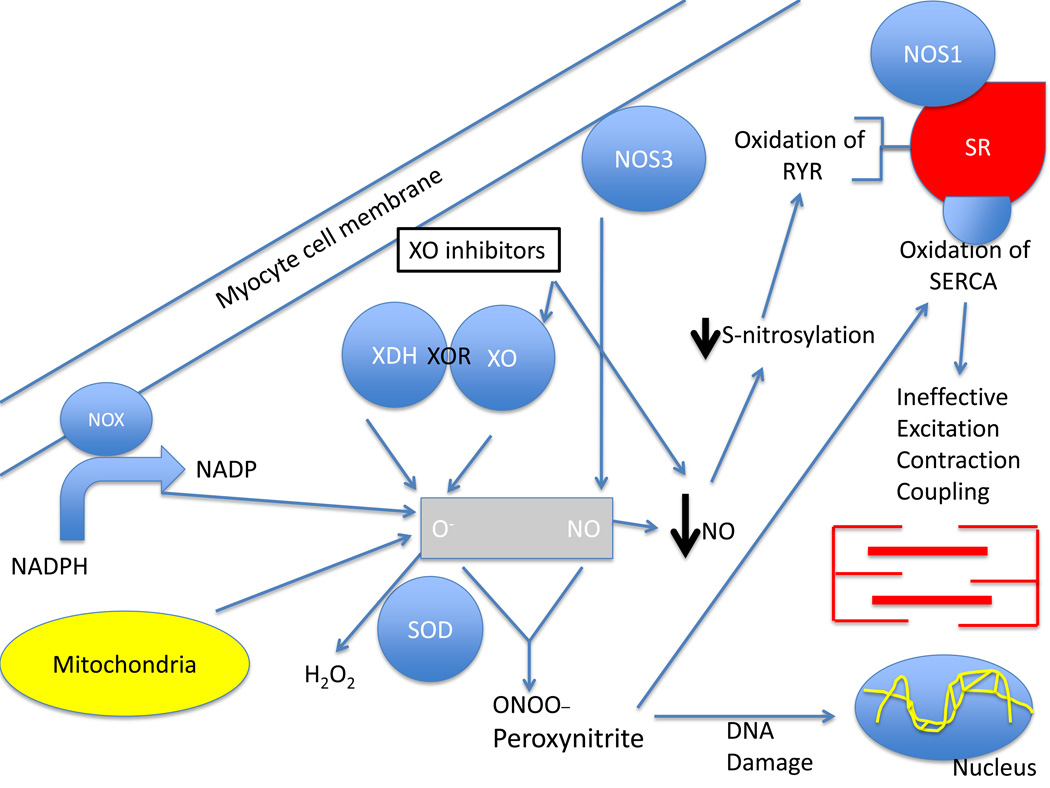Figure 1.
Effect of XO inhibition on the nitroso-redox balance. The underlying mechanistic basis for the use of xanthine oxidase inhibitors in the failing heart. As depicted xanthine oxidase inhibitors (XOI) act on one key enzyme – XO/XDH – to inhibit ROS production but has other actions that might detract from full restoration of nitroso-redox balance. XOI decrease serum uric acid and superoxide production by inhibiting xanthine oxidase. Importantly, however, there are other sources of ROS production in the failing heart, including mitochonrdrial respiration and NADPH oxidases, that are not affected by XOI. In addition, NOS activity may be impaired in heart failure, or further disrupted by XOI. In states of inadequate NO production, oxidation or diminished S-nitrosylation of the RYR receptor and other key proteins involved in excitation-contraction coupling impairs calcium cycling which drives optimal myocardial performance. Persistent ROS production also consumes NO and leads to peroxynitrite formation which can cause DNA, protein and lipid damage. Peroxynitrite oxidizes the calcium ATPase SERCA (responsible for calcium reuptake into the SR). Thus, NO continues to be depleted by XO inhibition perpetuating nitroso-redox imbalance and causing ineffective excitation-contraction coupling. Abbreviations: XOR: xanthine oxidoreductase, XO: xanthine oxidase, XDH: xanthine dehydrogenase, O−: Superoxide, NO: nitric oxide, NADPH: nicotine adenine dinucleotide phosphate, NOX: NADPH oxidases, 2NOS: nitric oxide synthase, SOD: superoxide dismutase, SR: sarcoplasmic reticulum, SERCA: sarcoplasmic reticulum calcium ATPase, RyR: ryanodine receptor.

